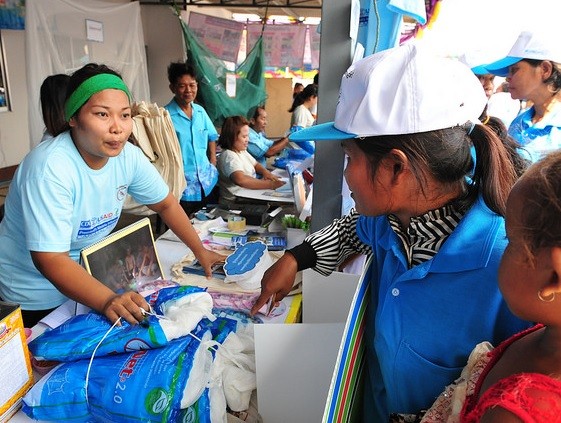
Jan. 2015—Inside the forested villages near the Thai-Burmese border, migrant workers are ill or at risk of becoming ill with malaria. Pockets of high malaria transmission still remain in these remote areas where there is limited medical care for workers who know little about the Thai health system or may not even speak Thai.
The majority of cases are located in the Kraburi and La-un districts in Ranong, a province popular for its fishing and rubber plantation industries that attract workers from within Thailand and around the region.
With support from the President’s Malaria Initiative (PMI), USAID implements the Control and Prevention of Malaria (PMI/USAID CAP-Malaria) project, which works to contain the multi-drug resistant Plasmodium falciparum strain of malaria and focuses on improving access to early diagnosis and treatment for malaria among populations most at risk for the disease, particularly migrant workers. The project works with this target population, who are often outside at night when Anopheles mosquitoes are more likely to bite and can transmit drug-resistant parasites.
To help deal with the caseload, project staff work with provincial and district health offices to establish malaria posts and train staff at existing health facilities. The posts are strategically located in endemic villages near border crossings so workers can stop by for screening and treatment. Signs in Thai and Burmese direct travelers to the sites where trained specialists use rapid diagnostic tests and administer artemisinin-based combination therapies that combat the multi-drug resistant strain. Brochures are also provided in both languages so patients understand the three-day treatment regimen and follow-up.
“I used to refer all suspected malaria cases to the malaria clinic, and I didn’t know if the patient would go or not,” said Suwan Manee, a public health officer in La-un district. “Now I can test for malaria and treat it on-site.”
Malaria services are also being integrated into the primary health services at the eight health promotion hospitals in La-un district. With the La-un District Health Office and the vector borne disease control staff, the project trained health care providers on malaria prevention, diagnosis and treatment of uncomplicated malaria. Staff were also trained to screen pregnant women for malaria during their prenatal visits and provide them with insecticide-treated bed nets.
“I’m happy I’m cured from malaria,” said Warin Visut, 43, a rubber tapper who was treated at both malaria clinics and one of the health promotion hospitals. “I will tell my neighbors about malaria and that they can go to [the hospitals] for treatment.”
More than 1,300 people along the Thai-Burmese border have been served by the PMI/USAID CAP-Malaria project since it began in October 2011.
USAID/PMI works closely with local governments, community leaders, health officials, community-based organizations and private companies to conduct activities to control malaria in affected border regions and contain the spread of multi-drug resistant malaria in the Greater Mekong sub-region.
LINKS
Follow @USAIDAsia, on Facebook, on Flickr, on YouTube







Comment
Make a general inquiry or suggest an improvement.